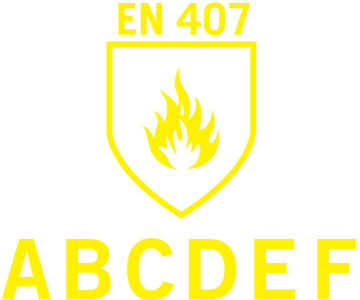
EN 407
Thermal Risks
EN 407 is an international glove standard that consists of 6 independent performance tests designed to measure and define thermal resistant work gloves. It’s important to understand the varying degrees of EN 407 in order to select the right thermal-resistant work gloves.
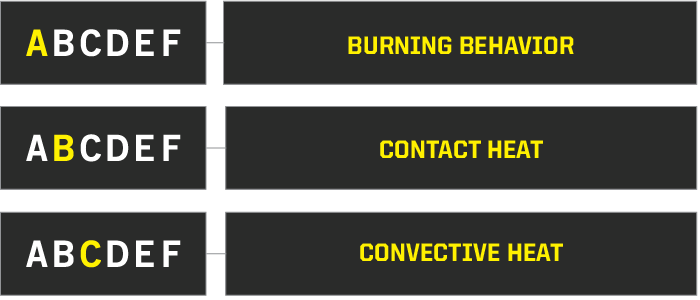
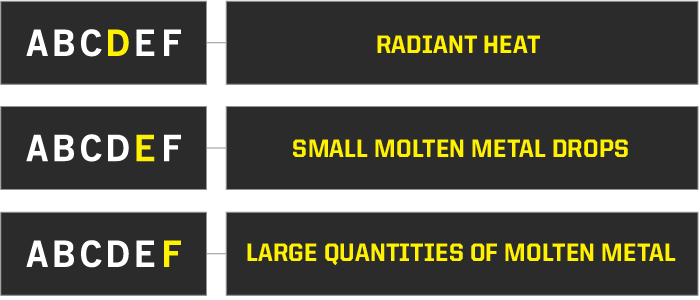
BURNING BEHAVIOR
ABCDEF
Performance Levels 0–4
Work gloves designed for high-heat exposure must be tested using the vertical flame test to measure both after-burn time and after-glow time for EN 407 certification. This test measures the ability of the material to extinguish itself after being ignited using 4 performance levels.
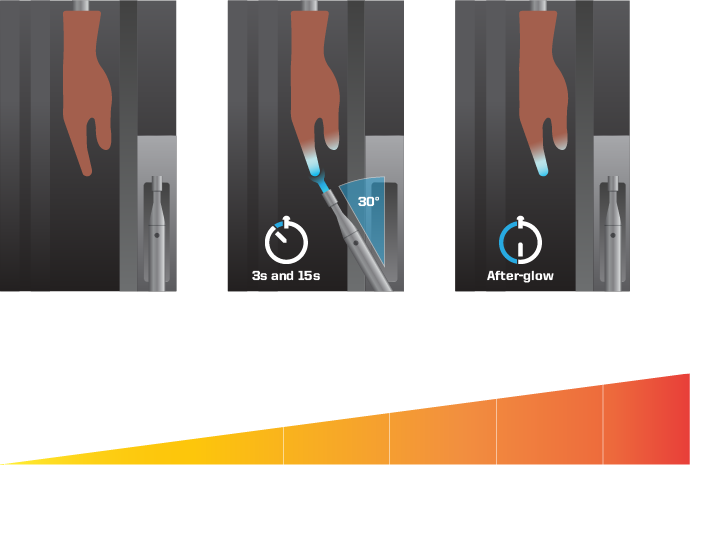

CONTACT HEAT TEST
ABCDEF
Performance Levels 0–4
Thermal protection from contact heat is determined by measuring a temperature rise of 10° C (50° F) on the inside of the glove. This is achieved by placing sample material on pre-heated plates and recording the temperature rise at each level for at least 15 seconds. When the Contact Heat performance level reaches 3 or 4, the Burning Behavior test must be performed and achieve at least a level 3, otherwise the maximum performance rating for Contact Heat will be reported as level 2.
CONVECTIVE HEAT TEST
ABCDEF
Performance Levels 0–4
Thermal protection from convective heat is determined by measuring the rate of temperature rise inside the glove when put in contact with a controlled gas flame.
RADIANT HEAT TEST
ABCDEF
Performance Levels 0–4
Thermal protection from Radiant Heat is determined by measuring a temperature rise of 24° C (75° F) inside the glove when exposed to a defined heat source.
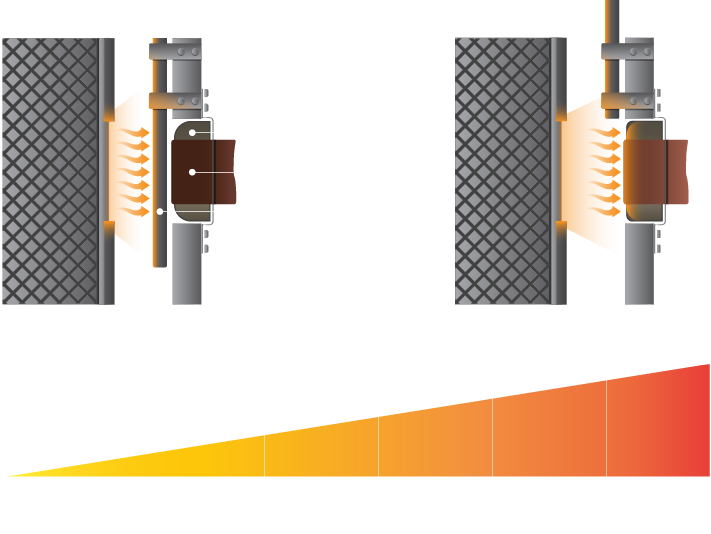
SMALL MOLTEN TEST
ABCDEF
Performance Levels 0–4
Thermal Resistance to Small Drops of Molten Metal testing is measured by the number of droplets that produce a temperature rise of 40° C (104° F) inside the glove.
LARGE MOLTEN TEST
ABCDEF
Performance Levels 0–4
Thermal Resistance to Large Quantities of Molten Metal testing is measured against PVC foil skin to simulate the inside of the glove, and molten metal is poured over the test sample.
